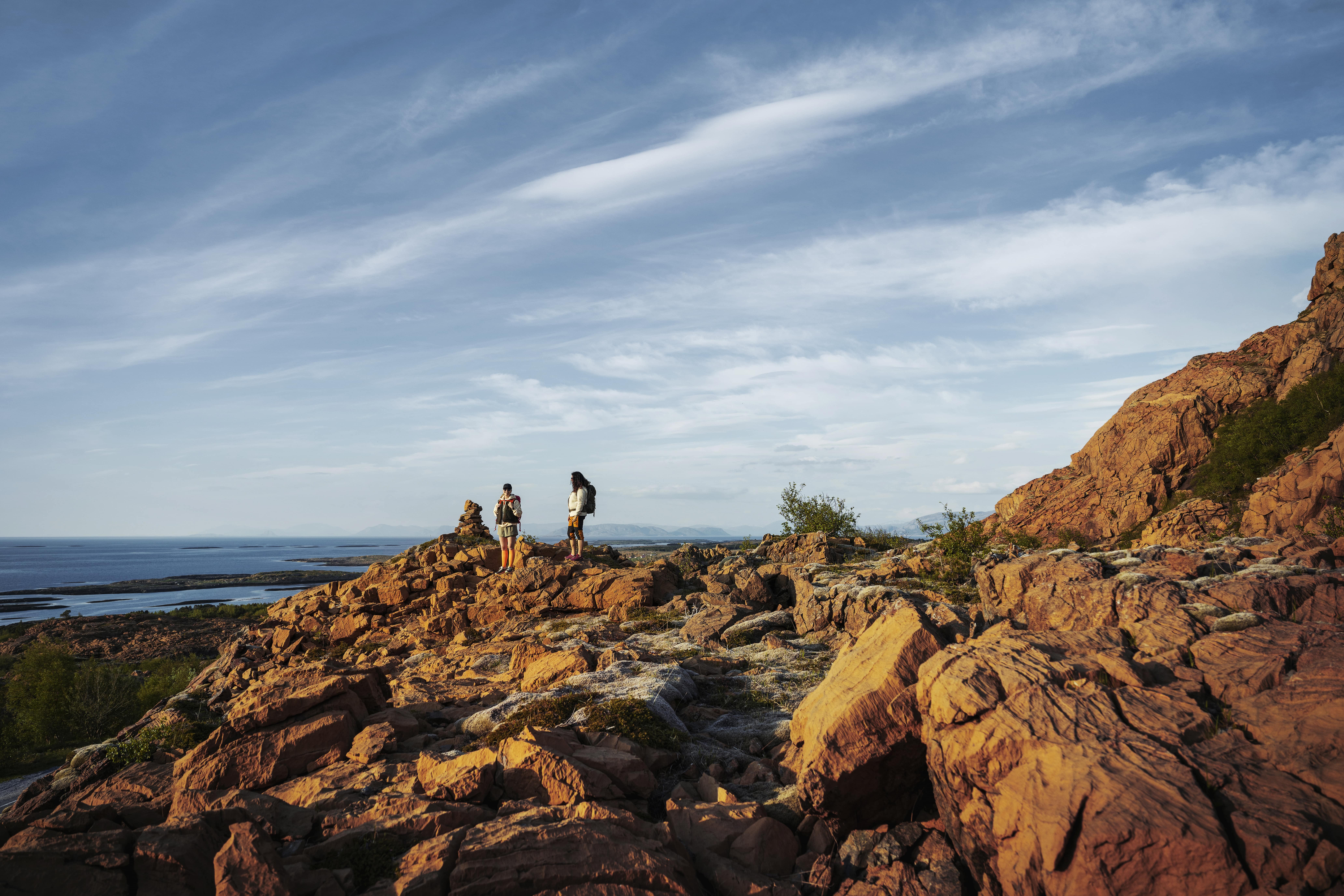Leka – a tiny part of America
The geology island of Leka is the northernmost part of Trøndelag and has been inhabited for at least 10,000 years. Large parts of the island consist of serpentinite and olivine, which gives the characteristic yellow-red colour, and is otherwise only found on the American side of the Atlantic.
Norway’s geological national monument
In 2010 Leka was voted as Norway’s geological national monument. The vote was organized by UT.no in collaboration with national broadcaster NRK and the Norwegian Trekking Association (DNT). If you want to learn more about stones, minerals and fossils from Leka in particular but Trøndelag and Nordland in general, we recommend a visit to Leka Stone Centre. In 2019 Leka became a part of Trollfjell Geopark – a UNESCO Geopark.













